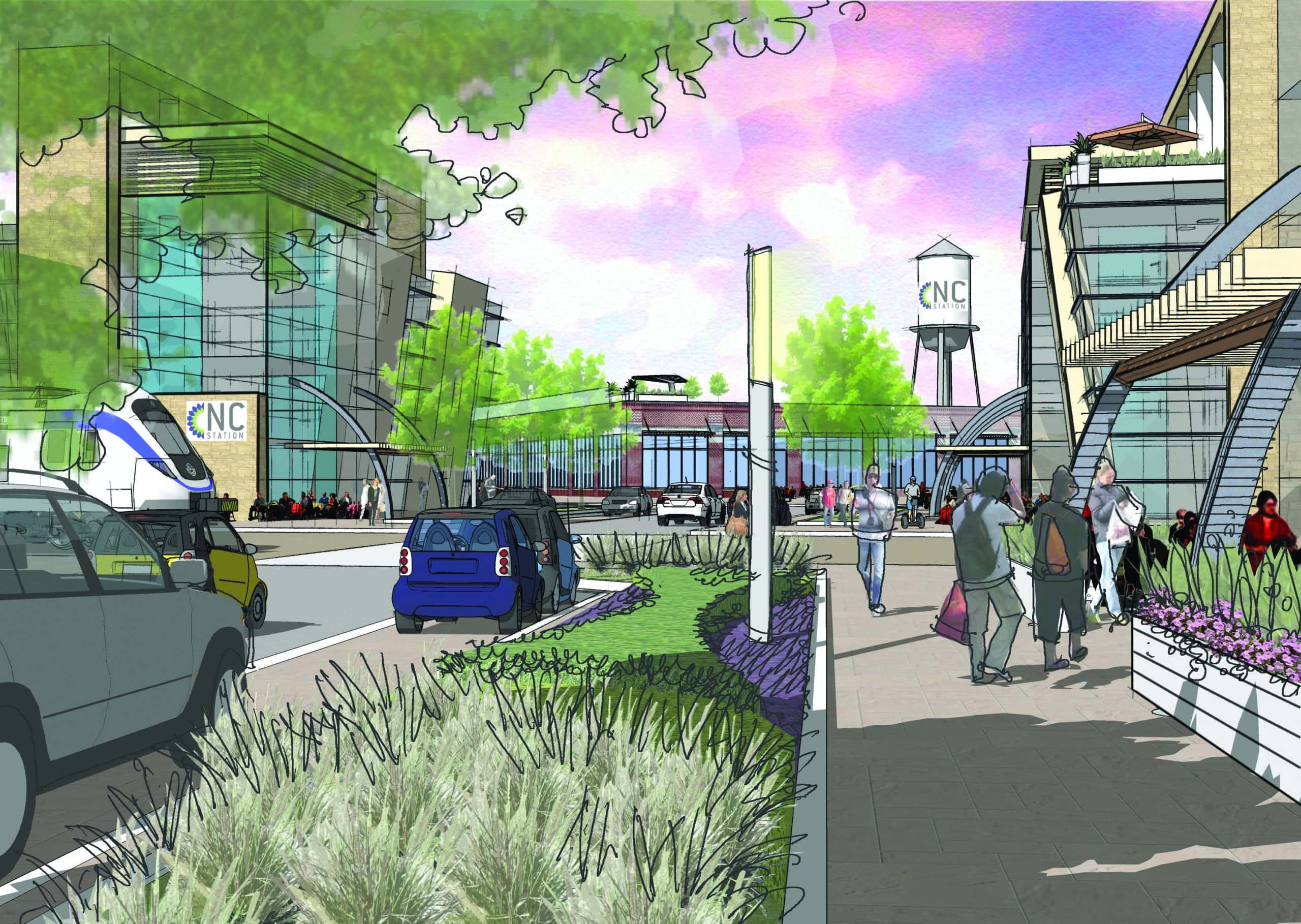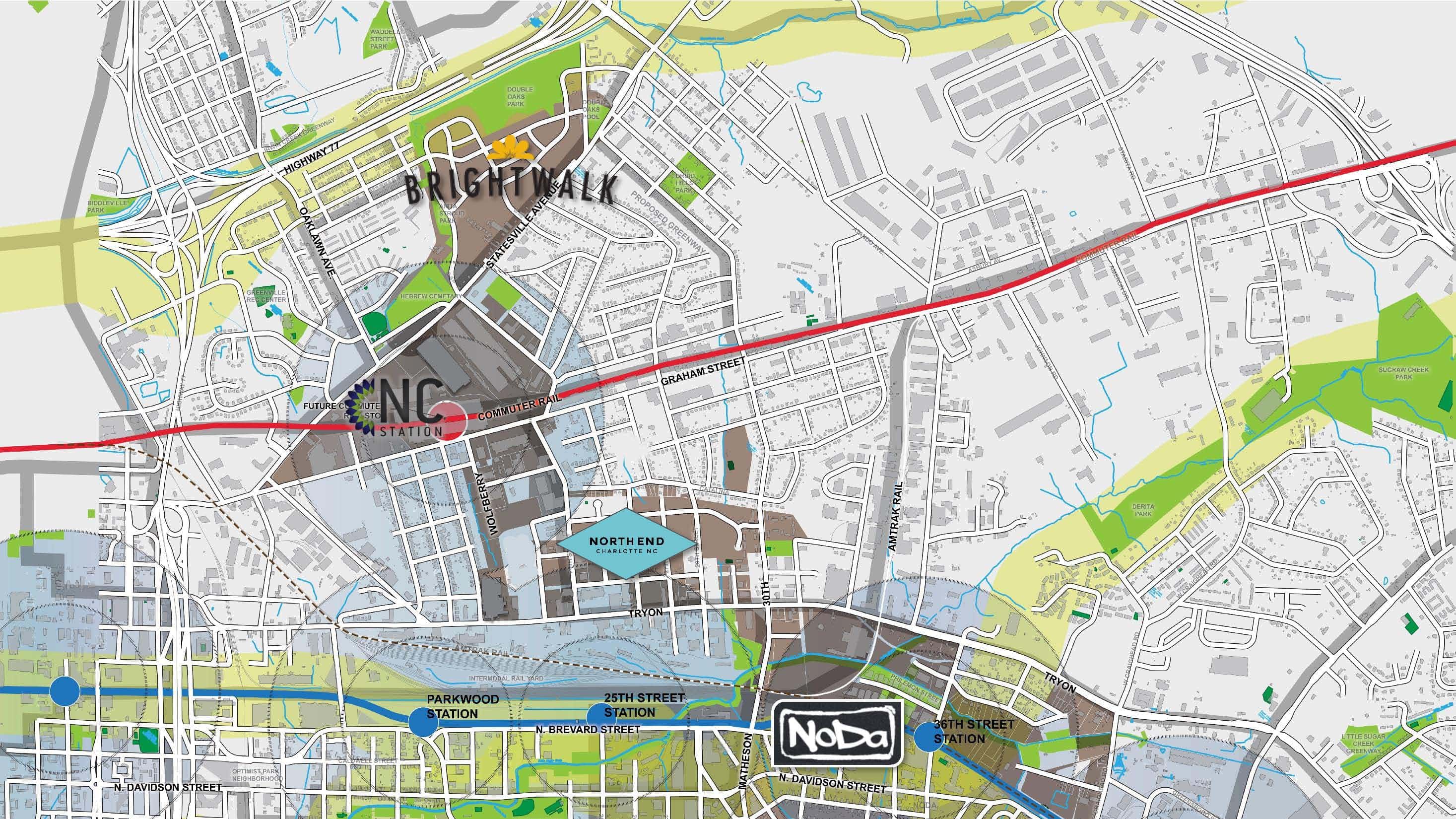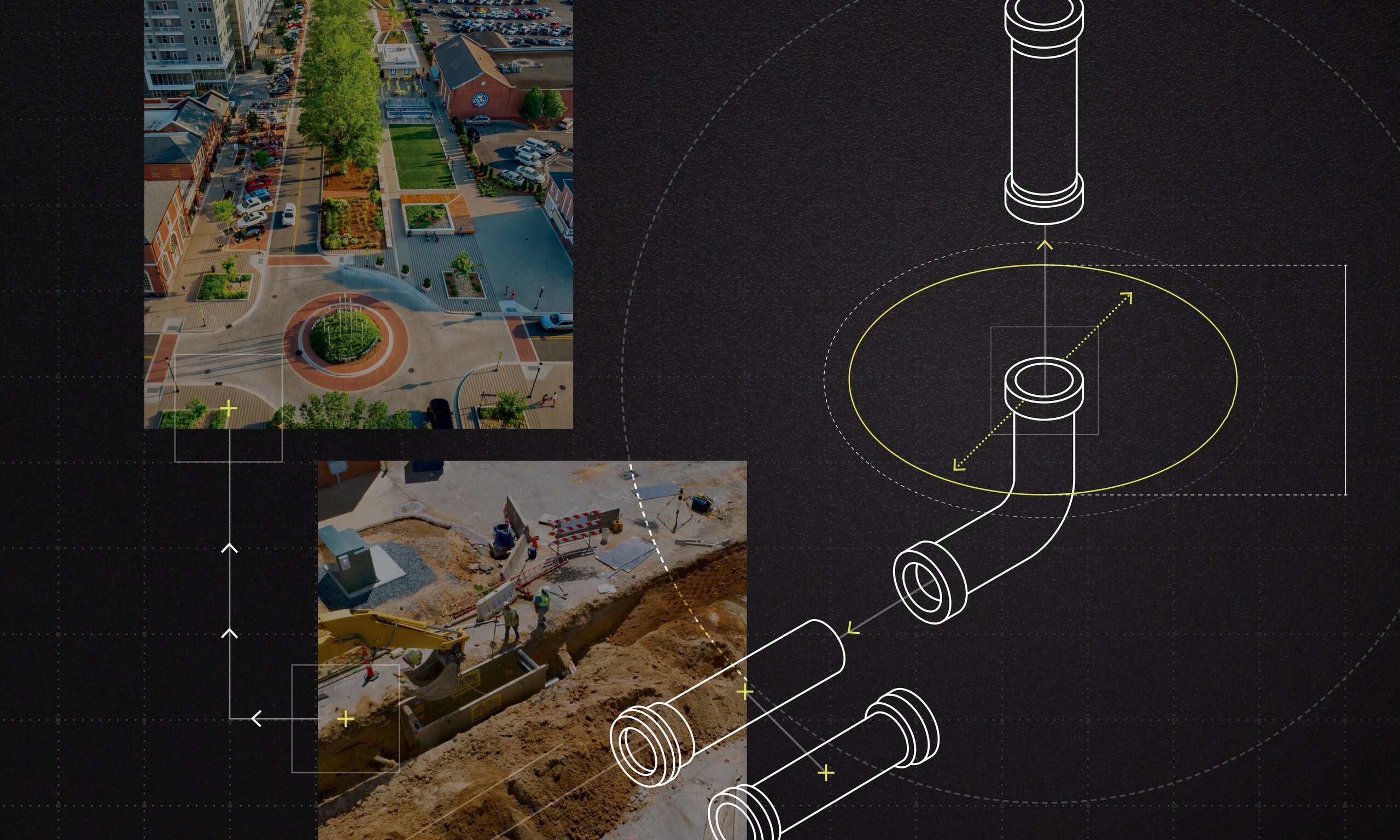By 2020, Charlotte Center City will be the central hub of an “Applied Innovation Corridor,” beginning in SouthEnd, extending through Uptown and “NorthEnd”—a 5.6-square-mile[charlotteobserver.com] hip, artsy new sector north of Uptown along the North Tryon Corridor—and linking onward to the UNC Charlotte campus. While banking and hospitality institutions continue to serve as the economic backbone of Charlotte, new technologies, industrial sectors and emerging markets bring greater prosperity and investment to Center City. These sectors are looking to NorthEnd for development growth and opportunity. Currently under way in NorthEnd, the CAMP NorthEnd Redevelopment Area, along with new initiatives like the Brightwalk community and the Fire Department Headquarters have built upon the area’s unique residential character and industrial history. The Hercules Industrial Park used to be a Ford Assembly Plant and later became a missile plant during World War II. The result of this revitalization effort: a distinctly walkable, mixed-use urban industrial park with distinctive neighborhoods, like Brightwalk and Tryon Hills. This area fosters an atmosphere of creativity, innovation and entrepreneurship; provides unparalleled connectivity for moving goods and people; and creates an exciting urban living and working experience linking the NorthEnd to NoDa (North Davidson), Belmont and the larger “Applied Innovation Corridor.”
NorthEnd Vision
The NorthEnd Vision came about as visionaries thought of this transit thread as an “Applied Innovation Corridor;” positioned to be the significant catalyst to bridge the divide between the North Uptown area and NoDa along this corridor. CAMP NorthEnd, a 100-acre parcel prime for prosperity, is the nexus of this meeting ground. CAMP NorthEnd is set to be the master planned multi-modal urban neighborhood that will redefine innovative, sustainable development for Charlotte and the region. Once complete, CAMP NorthEnd will house over 3 million square feet of office, retail and residential space, as well as 18 acres of integrated public parks and plazas. CAMP NorthEnd will strive to be net energy positive in every aspect of its community. This redevelopment represents the rebirth of one of the most prolific and historic sites in Charlotte.
The “Applied Innovation Corridor” currently has significant momentum from both private and public sector investment. These investments have catalyzed the area and have begun to transform the identity of NorthEnd into a dynamic residential and business address. Major infrastructure projects of roadway improvements, transit, and stream restorations continue to be funded on all sides of the “Applied Innovation Corridor,” which will provide for a powerful investment platform. Current planned NorthEnd investment projects include the following:
- LYNX Blue Line Extension (Northeast Corridor), $1B
- Red Line Commuter Rail, $450M
- Brightwalk Redevelopment, $100M
- 911 Call Center Campus, $65M
- NC Music Factory, $35M
- 2014 Community Investment Plan for the Applied Innovation Corridor, $30M
- Fire Department Headquarters, $16M
- Tryon Street Improvements, $9.5M
- Current NorthEnd Infrastructure Improvements Underway, $4M
- Statesville Avenue Improvements, $1.5M
- Irwin Creek Stream Restoration, $0.5M
Transit and Economic Development
Transit and economic development go hand in hand; one in turn will inevitably influence the other. “A healthy public transit system is vital to a thriving regional economy. Investing in public transit fuels local economic activity by creating new jobs, attracting commerce and investment, and enhancing business profits and productivity.”[partnersfortransit.com] Charlotte, with lessons learned from other fast growing, car-reliant, southern cities like Atlanta, set the intention to evolve as a community that cares and carefully considers its development growth pattern. As noted in the Center City 2020 Vision Plan, a comprehensive strategic plan that provides a “big picture” framework and unifying vision for Center City’s growth and development,[charlottecentercity.com] Charlotte decided on design decisions that integrated multi-modal transit opportunities in conjunction with trending development areas.
The Lynx Blue Line, Charlotte’s light rail system operating on a 9.6-mile transit spine from South Charlotte to Uptown, provides the platform for transit-oriented development to spur and catalyze change in a morphing urban landscape. The LYNX Blue Line Extension (northeast corridor), set to open in 2017, is an addition of a 9.3 mile alignment,[charmeck.org] from Ninth Street in Center City through NoDa, heading north and terminating on UNC Charlotte’s campus. Once the Blue Line is complete, riders will be able to travel to destinations along the twenty mile transit line through Charlotte.
The Red Line Commuter Rail is a proposed 30-mile project that will operate along the existing Norfolk Southern rail line (the “O” line) from Center City Charlotte to Mooresville, in southern Iredell County. The alignment runs parallel to Graham Street through NorthEnd.[charmeck.org]
Brightwalk, on the site of Double Oaks, a 576-home community built in 1950, is a redevelopment of a brownfield community one mile north of Center City. Brightwalk is one of eight neighborhoods that make up the key communities in the “Applied Innovation Corridor.” "Brightwalk is one neighborhood in a mosaic of neighborhoods and it's the mosaic that creates the fabric of an urban community," says N.C. State Representative Kelly Alexander Jr., a Charlotte native.[clclt.com] Brightwalk’s master plan fuses 98 acres of parks, greenway trails and roads with commercial and mixed-income residential uses, as well as environmental art development by the McColl Center. Brightwalk is complemented by improvements made to Statesville Avenue, in addition to work being done to instigate change in the adjacent Druid Hills neighborhood and NorthEnd area.
Additionally, the Tryon Hills area builds on the unique residential character and industrial history of NorthEnd. It is poised to become a vibrant community hub, providing diversity of its housing stock, places to gather, green space, commercial and incubator space for individuals, families, and businesses looking for a walkable urban lifestyle. This area is prime for development opportunities for both new infill development as well as forward-thinking adaptive reuse.
Prior to the 911 Communication Center, emergency services were scattered around the Charlotte metro area in separate facilities. By consolidating services, this 74,000 SF facility presented a unique opportunity to improve all functions in a coordinated, well-planned system thereby improving the lifesaving response time and reducing the critical response time. The facility is planned to have an operational staff of approximately 460 people based on a 2030 planning horizon. The facility will staff: Police and Fire 911/Dispatch, Emergency Operations Center, 311 Call Center, Charlotte DOT Traffic Camera Division, Mecklenburg County Sherriff’s Communications Division, and the City Data Center. The center is located at 1315 North Graham Street, just north of the new Charlotte Fire Department Headquarters Building.[charmeck.org]
The N.C. Music Factory, a 50-acre development, is home to restaurants, bars and concert venues as well as smaller businesses and office space. Two apartment complexes are under development with hope to build a hotel in the future. In fall 2015, Avid change, a fast-growing software company, announced the building of their new headquarters at the N.C. Music Factory. This location will add at least 600 jobs, stirring hopes for technology sector growth and redevelopment as part of the vision of the “Applied Innovation Corridor.” Once Avid change moves in, the N.C. Music Factory site will be able to accommodate at least 3 million more square feet of office space, potentially catering to another corporate headquarters.[charlotteobserver.com]
Charlotte’s Community Investment Plan (CIP), is a long-range investment program to help address the needs of the community. Approximately $816.4 million in proposed community improvements will be planned, designed and implemented, focusing on efforts relating to housing diversity/neighborhood improvements, increased connectivity/infrastructure improvements, economic development/job creation and growth.[charmeck.org]
The Fire Department Headquarters, a 36,000 SF facility, opened in April 2015. The site formerly housed a Sealtest office and an ice cream factory. The department, in coordination with the City of Charlotte, wanted the building to match the character and style of the surrounding area to keep in line with the North Graham Street and Statesville Avenue corridor revitalization project. The Fire Department Headquarters is located at 500 Dalton Avenue.[charlotteobserver.com]
NorthEnd’s infrastructure improvements involve both streetscape and stream restoration projects. The proposed green infrastructure overlay system will tie the community together, supporting a well-connected, walkable street network, linking to the city’s greenway system, and providing quality open space opportunities. This green infrastructure network can help support economic growth and stability by providing accessible and efficient connections between residences, schools, parks, public transportation, offices and retail destinations. Investment opportunities have catalyzed improvements to Statesville Avenue and Tryon Street, as well as to the Irwin Creek stream restoration project.
Additionally, the Cross Charlotte Trail, a 26-mile trail and greenway facility, is planned to meander from the City of Pineville, through Center City and NorthEnd, connect to UNC Charlotte’s campus and terminate at the Cabarrus County line. NorthEnd is staged for a plethora of opportunities to become a vibrant, engaging, economic node on both the LYNX Blue Line and the Cross Charlotte Trail.
Conclusion
NorthEnd is positioned to be the significant catalyst for change to connect the North Uptown Area and NoDa, providing a strong interconnection of streets, transit and greenways with complementary housing, office and retail offerings. With these many facets forming and influencing one another, NorthEnd is set to thrive and grow, living up to its vision of an innovative, creative, dynamic, vibrant city within the city of Charlotte, North Carolina.




